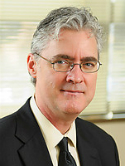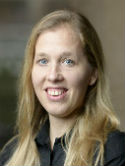Predicting cancer relapse following lung stereotactic radiotherapy: An external validation study using real-world evidence Journal Article
| Authors: | Davey, A.; Thor, M.; van Herk, M.; Faivre-Finn, C.; Rimner, A.; Deasy, J. O.; McWilliam, A. |
| Article Title: | Predicting cancer relapse following lung stereotactic radiotherapy: An external validation study using real-world evidence |
| Abstract: | Purpose: For patients receiving lung stereotactic ablative radiotherapy (SABR), evidence suggests that high peritumor density predicts an increased risk of microscopic disease (MDE) and local-regional failure, but only if there is low or heterogenous incidental dose surrounding the tumor (GTV). A data-mining method (Cox-per-radius) has been developed to investigate this dose-density interaction. We apply the method to predict local relapse (LR) and regional failure (RF) in patients with non-small cell lung cancer. Methods: 199 patients treated in a routine setting were collated from a single institution for training, and 76 patients from an external institution for validation. Three density metrics (mean, 90th percentile, standard deviation (SD)) were studied in 1mm annuli between 0.5cm inside and 2cm outside the GTV boundary. Dose SD and fraction of volume receiving less than 30Gy were studied in annuli 0.5-2cm outside the GTV to describe incidental MDE dosage. Heat-maps were created that correlate with changes in LR and RF rates due to the interaction between dose heterogeneity and density at each distance combination. Regions of significant improvement were studied in Cox proportional hazards models, and explored with and without re-fitting in external data. Correlations between the dose component of the interaction and common dose metrics were reported. Results: Local relapse occurred at a rate of 6.5% in the training cohort, and 18% in the validation cohort, which included larger and more centrally located tumors. High peritumor density in combination with high dose variability (0.5 - 1.6cm) predicts LR. No interactions predicted RF. The LR interaction improved the predictive ability compared to using clinical variables alone (optimism-adjusted C-index; 0.82 vs 0.76). Re-fitting model coefficients in external data confirmed the importance of this interaction (C-index; 0.86 vs 0.76). Dose variability in the 0.5-1.6 cm annular region strongly correlates with heterogeneity inside the target volume (SD; ρ = 0.53 training, ρ = 0.65 validation). Conclusion: In these real-world cohorts, the combination of relatively high peritumor density and high dose variability predicts increase in LR, but not RF, following lung SABR. This external validation justifies potential use of the model to increase low-dose CTV margins for high-risk patients. Copyright © 2023 Davey, Thor, van Herk, Faivre-Finn, Rimner, Deasy and McWilliam. |
| Keywords: | adult; human tissue; aged; major clinical study; cancer recurrence; squamous cell carcinoma; validation process; cancer patient; cancer radiotherapy; radiation dose; positron emission tomography; follow up; adenocarcinoma; computer assisted tomography; tumor volume; cohort analysis; lung cancer; validation study; prediction; biopsy; histology; high risk patient; karnofsky performance status; proportional hazards model; training; dosimetry; fluorodeoxyglucose f 18; comorbidity; stereotactic treatment; kaplan meier method; density; stereotactic body radiation therapy; personalized medicine; gross tumor volume; non small cell lung cancer; nsclc; external validation; data mining; very elderly; human; male; female; article; stereotactic ablative body radiotherapy (sabr); ecog performance status; local relapse; biomarker-by-treatment interactions; image-based data mining; real world data |
| Journal Title: | Frontiers in Oncology |
| Volume: | 13 |
| ISSN: | 2234-943X |
| Publisher: | Frontiers Media S.A. |
| Date Published: | 2023-07-12 |
| Start Page: | 1156389 |
| Language: | English |
| DOI: | 10.3389/fonc.2023.1156389 |
| PROVIDER: | scopus |
| PMCID: | PMC10369005 |
| PUBMED: | 37503315 |
| DOI/URL: | |
| Notes: | Article -- Source: Scopus |
Altmetric
Citation Impact
BMJ Impact Analytics
Related MSK Work






